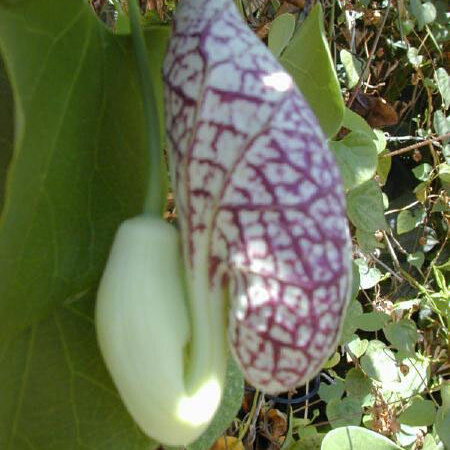Herbs twining. Stems terete, smooth, glabrous, with enlongate internodes. Petiole 1-2 cm, glabrous; leaf blade ovate or oblong-ovate to sagittate, 3-6 × 1.5-3.5 cm, papery, both surfaces glabrous, veins palmate, 2-3 pairs from base, base cordate, sinus 1-1.5 cm deep, apex acute or obtuse. Flowers axillary, solitary or paired. Pedicel 1-1.5 cm, ascending, glabrous; bractlets deltoid, 2-3 × 2-3 mm, inserted near base of pedicel. Calyx yellow-green, throat dark purple; tube rectilinear, abaxially glabrous; utricle globose, 3-5 mm in diam., sessile; tube 20-25 × 2-3 mm; limb unilateral, ligulate, ovate-lanceolate, 2-3 × ca. 1 cm, apex obtuse. Anthers elliptic, ca. 0.5 mm. Gynostemium 6-lobed. Capsule subglobose, 4-6 cm in diam., dehiscing acropetally. Seeds obtusely deltoid, ca. 4 × 4 mm, with membranous wing. Fl. Jul-Aug, fr. Sep-Oct.
More
A small herb. It is a scrambling plant with dark purple stems and branching. It grows 1 m tall and spreads 1 m wide. It keeps growing from year to year. The leaves are narrow and almost triangle shaped. They are 4-7 cm long by 5 cm wide. The flowers occur singly and are slender and yellow-green. The fruit is a round capsule.
Can be grown by cuttings or seedlings. Seeds needs soaking.

